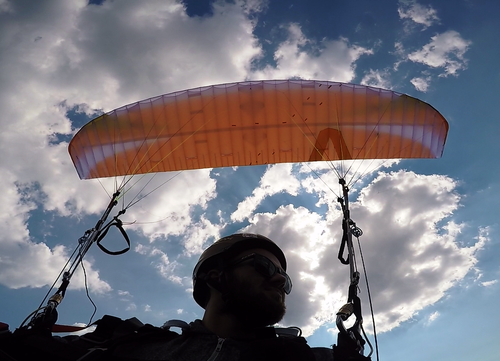Skywalk Masala2 M |
|||||||||||||||||||||||||||||||||||||||||||||||||||||||||||||||||||||||||||||||||||||||||||||||||||||||||||||||||||


|
|||||||||||||||||||||||||||||||||||||||||||||||||||||||||||||||||||||||||||||||||||||||||||||||||||||||||||||||||||
Instability rating |
|||||||||||||||||||||||||||||||||||||||||||||||||||||||||||||||||||||||||||||||||||||||||||||||||||||||||||||||||||
|
|||||||||||||||||||||||||||||||||||||||||||||||||||||||||||||||||||||||||||||||||||||||||||||||||||||||||||||||||||
Glider characteristics |
|||||||||||||||||||||||||||||||||||||||||||||||||||||||||||||||||||||||||||||||||||||||||||||||||||||||||||||||||||
|
Launch preparations: difficult
launch characteristics: balanced, climbs constantly, no guidance necessary, good feedback during inflation, little braking required, slows before zenith, control check simple, low takeoff speed
asymmetric collapse: canopy collapses at low angle to leading edge, en: EinklapperDynamikGering, total course change 180-270°, (3), moderate forward pitching 45-60°, (2), moderate height loss 30-39 m, (2), low sink velocity 10-14 m/s, (1), G-Force < 2,5 G, (1)
Frontal collapse: canopy collapses with low total collapse area, moderate pitch backwards 30-45°, low pitch forwards <30°, low dynamics, no course change, (1), recovery usually immediate, symmetric recovery, immediate return to normal airspeed, moderate height loss 30-39 m, (2), very low sink velocity <10 m/s, (1)
Spiral dives: moderate sink velocity increase, Moderate G-Force 3,5- 4.0 G, (2), Sink velocity after 720° <14 m/s, (1), Moderate maximum sink velocity < 18 m/s, (2), sink velocity increase < 6 m/s on brake release, (2), Course change 180-360° after spiral exit, (2), moderate height loss during recovery 30-60 m, (2)
B-Stall: normal force required, moderate pitch backwards 15-30°, moderate pitch forwards 15-30°, stable sink phase, no tendency to deform, immediate return to normal airspeed, 6-8 m/s, height loss on recovery < 20 m
big ears: simple initiation, stable flight phase, delayed automatic recovery, Vsink unaccelerated 3-3,5 m/s, Vsink accelerated 4-4,5 m/s, Vunaccelerated 0-3 km/h less than trimspeed, Vaccelerated 5-8 km/h faster than trimspeed
Steering behaviour: balanced to agile, 70 cm brake travel range, very noticable brake pressure increasse, Late stall point, easily identifiable |
|||||||||||||||||||||||||||||||||||||||||||||||||||||||||||||||||||||||||||||||||||||||||||||||||||||||||||||||||||
Notes |
|||||||||||||||||||||||||||||||||||||||||||||||||||||||||||||||||||||||||||||||||||||||||||||||||||||||||||||||||||
|
TakeOff Due to the very light construction the glider is not very easy to prepare for takeoff. Thin risers and uncovered gallerylines need a exact eye on. The takeoff itself is due to the light canopy very easy. If there is a bit of wind, it's recommended to launch the canopy facing towards the glider, because the glider will not stay calm on the ground for preparing. Air Agile Handling. The glider feels a little bit nervous. Asymmetric Collapse The gliders was hard to collapse. Surfacedeep collapses showed a maximum pitch around 60° - which is close to Safey Class 4. The glider turns more than 180°, which is on the lower End of Safety Class 3. Front Collapse Very calm behavior. It was not possbile to do very big front collapses. Glider reaktion can be different if the collapse is bigger. Spiral Easy to steer into Spiral. If the Pilot does not act against the g-force, the glider shows a fast exit. There is a very thin line between continue turning for a while and fast exit at the maximum wingload. After brakerelease the glider accelerates up to 18m/s. The behavior is close to the next higher Safety Class. B-Line-Stall Without any problems. Thin risers are hard to pull. BigEars No seperated A-Lines cause a more difficult entry. Behavior it self is good. |
|||||||||||||||||||||||||||||||||||||||||||||||||||||||||||||||||||||||||||||||||||||||||||||||||||||||||||||||||||
Rating |
|||||||||||||||||||||||||||||||||||||||||||||||||||||||||||||||||||||||||||||||||||||||||||||||||||||||||||||||||||
|
Safety class 3 This class of paraglider react moderately to one or more of the following manoeuvres: frontal collapse, asymmetric collapse or spiral dive.Moderately means that the above manoeuvres result in dynamic reactions from the glider and/or large height losses. Good piloting skills which need to be regularly practised, together with good personal reaction times which are above basic training levels are required to safely fly this class of gliders. Skill and experience levels greater than those attained in basic training are required to safely recover from the above manoeuvres. Emergency descent manoeuvres, in particular spiral dives may require advanced recovery skills. Additional training such as regular ground handling or SIV training is recommended. |
|||||||||||||||||||||||||||||||||||||||||||||||||||||||||||||||||||||||||||||||||||||||||||||||||||||||||||||||||||

